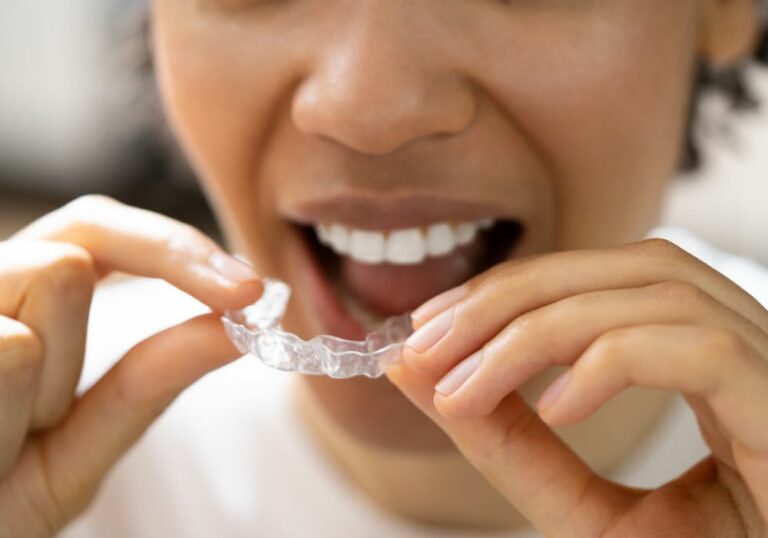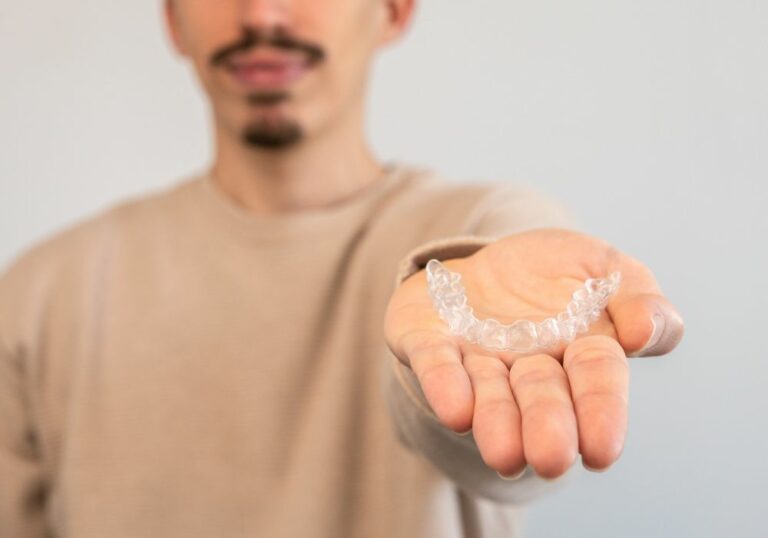What’s causing the grey discoloration under my dental crown?
There are several potential reasons you may notice grey discoloration or shading under a previously normal-looking dental crown. The main causes include:
Dying dental pulp
The inner soft tissue inside a tooth is called the pulp. It contains nerves and blood vessels that supply the tooth with sensation and nutrition. If this pulp tissue becomes infected due to severe tooth decay or trauma, it can start to die off.
As the decay spreads deeper towards the pulp, bacteria and inflammation in the inner tooth structure can cut off the supply of blood flow to the pulp tissue. This causes the nerves to necrotize and die.
When pulp tissue dies, it decomposes and breaks down inside the narrow inner tooth chambers. This leads to the release of grayish-black waste products that seep into the inner tooth dentin and cause dark grey staining inside the tooth.
This whole process is called internal resorption and indicates the tooth has become non-vital. The grey discoloration usually starts at the neck of the tooth and spreads upwards underneath the crown over time. As more of the pulp dies, the greying becomes more extensive.
Along with the color change, you may notice symptoms like sensitivity to hot or cold and spontaneous pain indicating pulp infection and damage. Seeking prompt treatment is important to prevent total pulp death and abscess.
Loss of cement seal
Dental crowns are held firmly onto teeth with dental cement. This cement forms a tight seal between the crown and underlying tooth surface.
Over time, this cement can deteriorate and break down due to:
- Normal wear from chewing and biting forces
- Poor crown bonding technique when the crown was initially placed
- Lack of proper oral hygiene leading to plaque buildup at crown margins
As the cement layer thins and tiny gaps form, the grey color of the inner prepared tooth structure can start to show through under the crown edges. This usually appears as a thin grey line or halo following the crown margin contours.
Cement breakdown may also allow new bacterial decay to develop in micro-gaps between the crown and tooth surface. As this small decay worsens, it shows through as grey shadowing along the crown margins.
Development of secondary tooth decay
Dental crowns fully cover and encase the entire visible tooth structure, but they cannot prevent new decay from forming under the crown edges.
If oral hygiene is inadequate, plaque and bacteria can accumulate around the crown margins. The bacterial acids will then start to demineralize the tooth structure under the crown rim, leading to cementum and dentin destruction.
This new decay usually presents as grey, opaque spotting or shading that spreads underneath the crown margins. The decay is termed “secondary” because it develops after crown placement.
This decay indicates the tooth structure under the crown is breaking down and requires restoration. Leaving it untreated allows the problem to progress and more extensive discoloration to develop.
How can I determine if the grey tint is problematic?
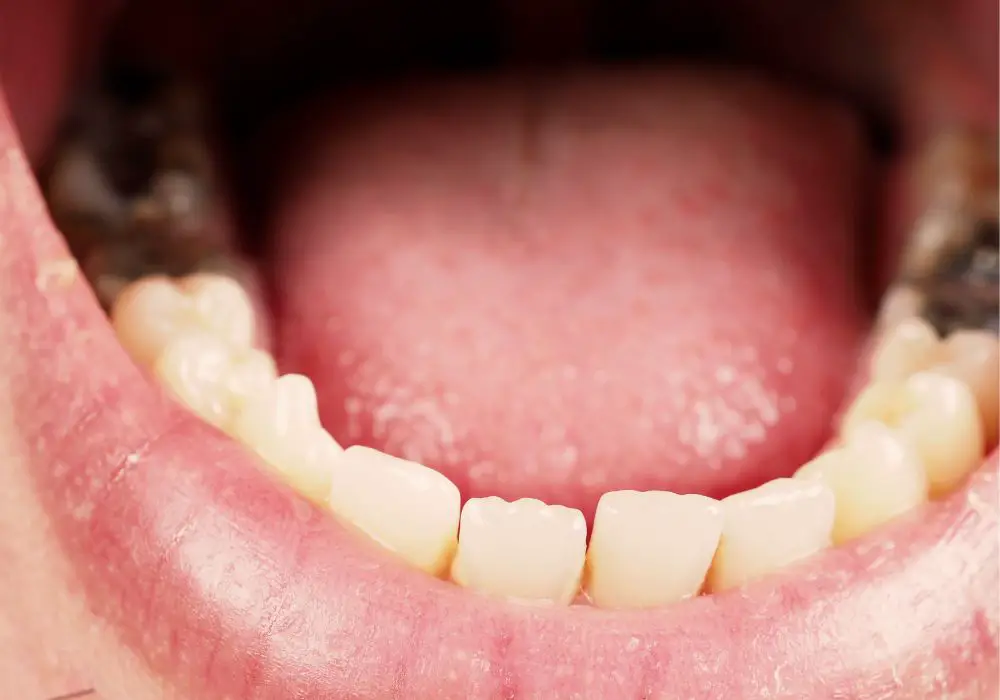
In some cases, the greyish hue along the crown edge may have been present in a minimal form since the crown was first cemented in place. Seeing a thin grey line or minimal shading after just having your crown placed may not be concerning.
However, pay attention for any of these warning signs that indicate the greying is likely pathological and needs dental evaluation:
- The grey shading has noticeably progressed and darkened over time since the crown was placed
- You experience temperature sensitivity – the tooth feels uncomfortable with hot or cold foods and drinks
- There is visible decay in the tooth structure adjacent to the crown margins
- You notice a foul odor or bad taste seeming to come from the crowned tooth
- The tooth feels painful or uncomfortable when chewing down on it
Any temperature sensitivity, decay at the crown edges, odor, taste, or pain are clear signs of problems like infection or advanced secondary decay. Make an appointment promptly with your dentist if the crowned tooth displays any of these symptoms.
Leaving these issues untreated allows them to worsen over time and spread through more of the tooth structure under the crown. It’s much easier and less invasive to treat limited infection or decay rather than extensive damage.
What treatment options are available?
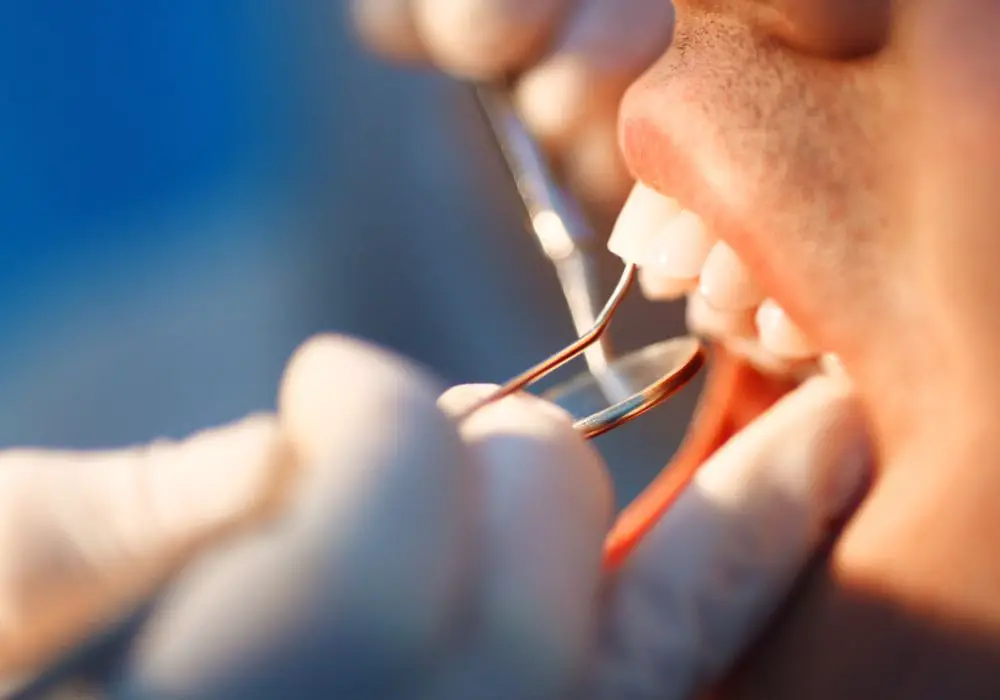
The necessary treatment will depend on the diagnostic testing and clinical findings from your dentist. Here are some of the common treatments used to address grey discoloration under a crown:
Root canal treatment
If pulp infection and inner resorption are causing the greying, root canal treatment will be needed. This is done by first numbing the tooth and then drilling an access hole down through the crown into the pulp chamber.
All infected and dead pulp tissue is removed from the inner root canals using specialized endodontic files. The canals are disinfected with medicated rinses and sealed with rubber fillings to prevent recontamination.
A temporary sedative filling is placed in the access hole while the root canal heals over the next 1-2 months. Then the access is permanently restored with a bonded filling, and often a new crown is fabricated and cemented over the tooth afterward.
Root canal treatment helps halt the inner resorption process and stop the greying from progressing further. It removes the diseased pulp so the tooth can heal.
Dental crown replacement
In cases of cement breakdown or secondary tooth decay under the crown margins, replacing the old crown is often needed. This involves numbing the tooth and then drilling off the existing crown completely.
Any underlying decay is removed and the tooth is reshaped and prepared for the new crown. Impressions are taken and sent to a dental lab that will custom-fabricate a new crown closely matched to your natural teeth.
A temporary crown is placed while the permanent one is being made. In 2-3 weeks, the new custom crown is cemented in place over the cleaned and repaired tooth structure. A proper cement seal and oral hygiene routine can help maximize the longevity of the new crown.
Dental bonding
For situations where the grey discoloration is minimal and confined to a small area, dental bonding may be an option. This conservative approach can buy time and mask the greying temporarily.
The process involves roughening the discolored region slightly and then applying thin layers of tooth-colored composite resin material. This resin is shaped and hardened with a curing light. When done well, the bonding blends with surrounding tooth structure and hides the grey shading.
While dental bonding can temporarily improve appearance, it may need occasional touch up or replacement. It’s not as durable a solution as addressing underlying decay or pulp issues.
Can I prevent the grey discoloration from developing?
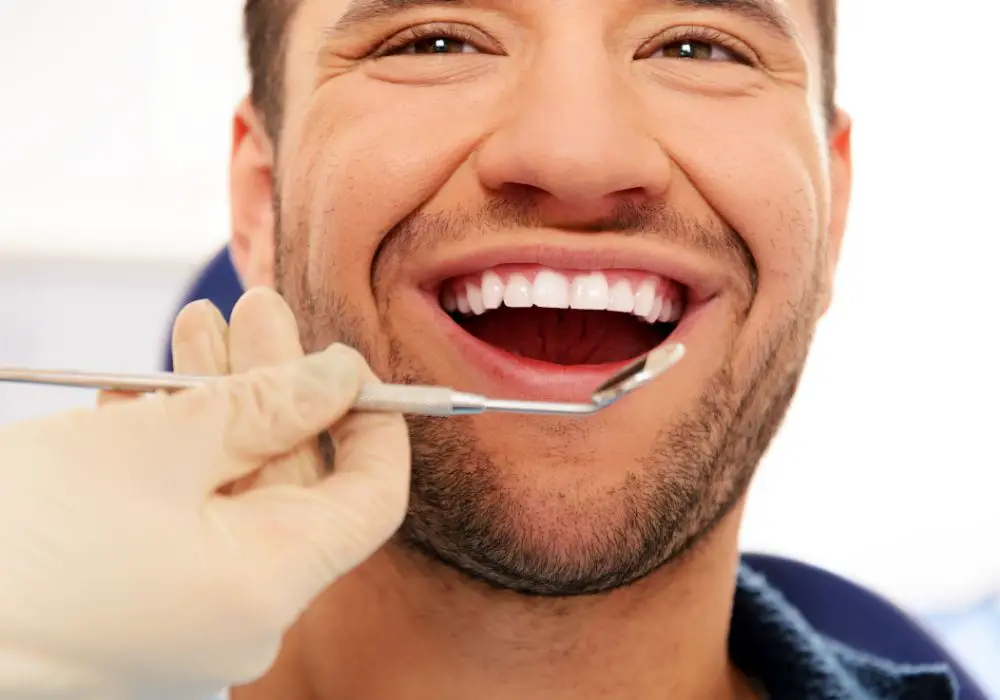
While some amount of greying under crowns is inevitable over time, you can take these preventive steps to minimize your risk:
- Maintain excellent oral hygiene with twice daily brushing, daily flossing, and the use of antimicrobial mouthwashes. This helps prevent decay from developing under crown edges.
- Have regular 6-month dental cleanings and checkups. Your dentist can evaluate the crown margins closely and detect issues early before they progress.
- Avoid chewing hard foods like ice, raw nuts, or hard candies with your crowned tooth. The biting forces can weaken and deteriorate the crown cement prematurely.
- Don’t neglect temperature sensitivity or pain from a crowned tooth. Getting early-stage pulp issues treated promptly reduces the chances of extensive inner greying later on.
- Discuss use of dental sealants under the crown edges with your dentist. In some cases, sealants applied to vulnerable areas can protect against secondary decay.
- Consider dental insurance if you don’t already have coverage. This can greatly reduce out-of-pocket costs for any crown repairs or replacements needed over your lifetime.
With proper oral care habits and regular dental maintenance, you can maximize the years of service you get from dental crowns. But be attentive to any changes in color or symptoms related to the tooth and seek prompt care when they arise.
FAQ about grey teeth under dental crowns:
Here are answers to some frequently asked questions patients have about grey teeth underneath their dental crowns:
Q: Can I fix the grey color myself or do I need to see a dentist?
A: You should never attempt to treat any dental symptoms or problems yourself at home. The grey color indicates issues like inner resorption, secondary decay, pulp infection, or cement deterioration that require professional care. See your dentist promptly if you notice any color changes, pain, or other problems with a crowned tooth.
Q: Is a grey tooth under a crown definitely dying or becoming abscessed?
A: Not always, but it’s a possibility your dentist must evaluate. Grey shading under a crown can also sometimes be due to cement gaps or pre-existing discoloration. Your dentist will examine the tooth closely and may take x-rays to diagnose the exact cause. Testing the tooth pulp vitality can help determine if the greying is related to infection or pulp dying.
Q: Should I get my crown replaced as soon as I notice any greying?
A: Not necessarily, but you do need an assessment. Some minor greying may be monitorable for a period before needing intervention. Other cases may reveal urgent issues requiring prompt treatment, like an abscess requiring root canal therapy. Have your dentist examine the tooth to determine the appropriate next steps based on your particular symptoms and clinical findings.
Q: Can I bleach my tooth to get rid of the grey color under the crown?
A: Unfortunately, external bleaching and whitening treatments will not change the color of any greying beneath your crown. They only affect and lighten the outer natural tooth structure visible above the crown line. If the grey tint indicates underlying problems, bleaching won’t resolve the issue. The necessary treatment depends on the diagnosed cause of the inner discoloration.
Q: Could the grey color be related to my overall health?
A: While many systemic diseases can cause tooth discoloration, localized grey shading under one crown is likely related to issues within that individual tooth. However, significant grey hues affecting multiple teeth may indicate an underlying disorder. Be sure to mention any unusual color changes to your dentist and physician to determine if any further medical evaluation is needed.
Q: Will my crown need to be replaced now?
A: Maybe, maybe not. It depends on the diagnosis your dentist makes after evaluating the tooth. In some cases, they may try to refurbish the existing crown with bonding or other repair work. Other times, full crown replacement is the only long-term solution when decay or resorption is too extensive. Have your dentist advise the best treatment approach based on your particular tooth’s condition. With proper care, many crowns can last 5-15 years or longer before replacement is needed.
Does this help expand on the topic in more detail? Let me know if you would like me to modify or add any other information to the article. I can also create additional FAQ items as needed.



